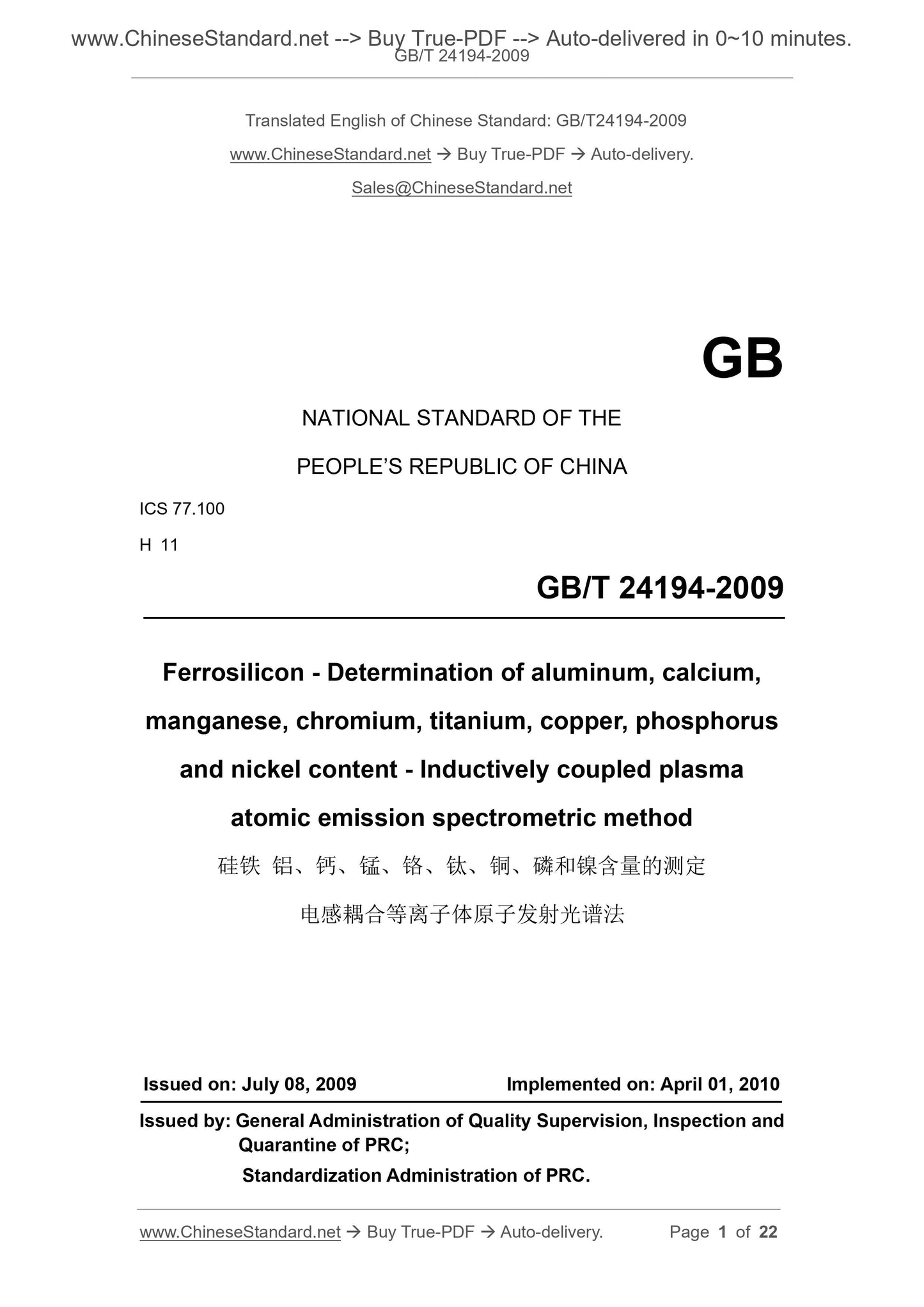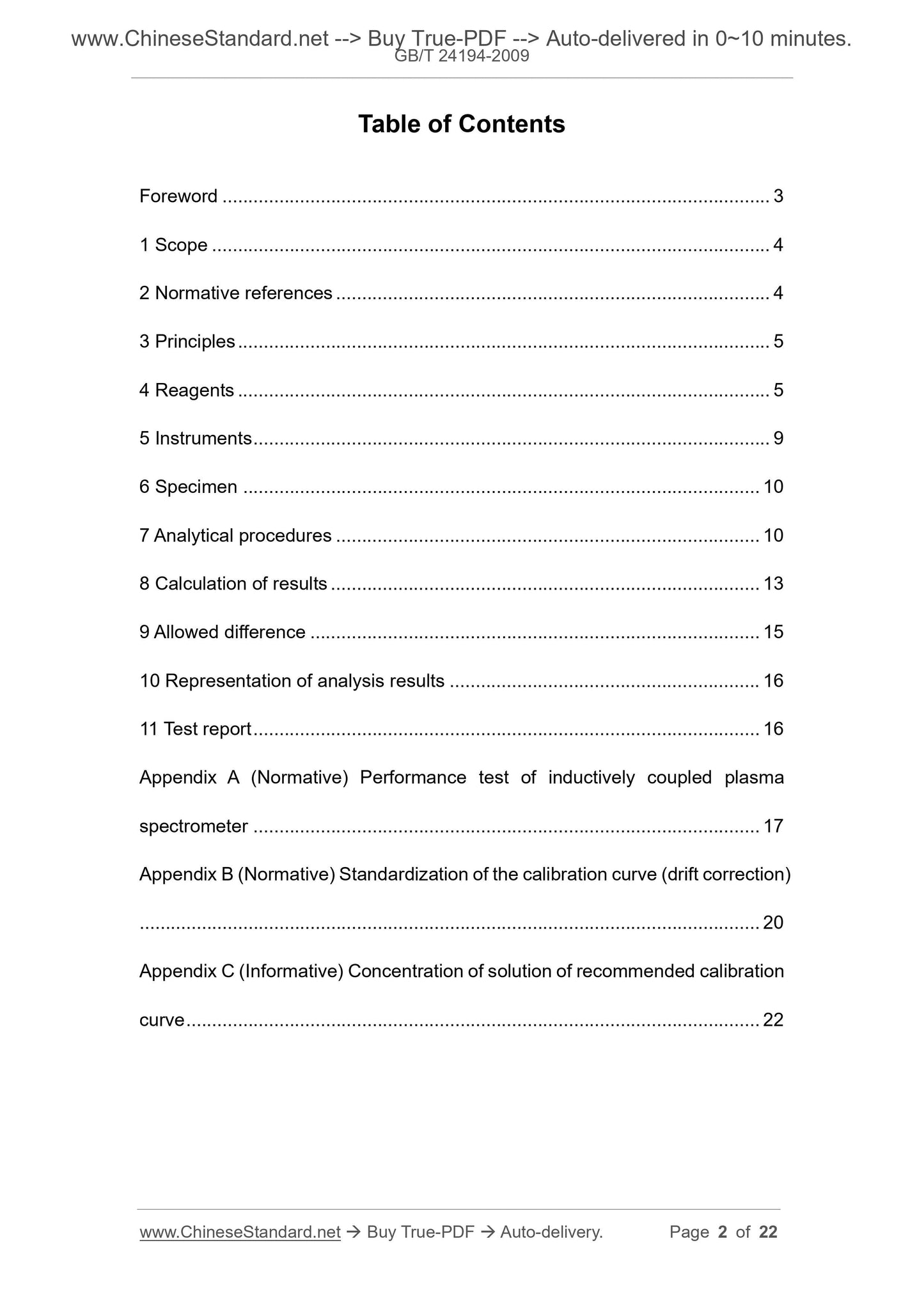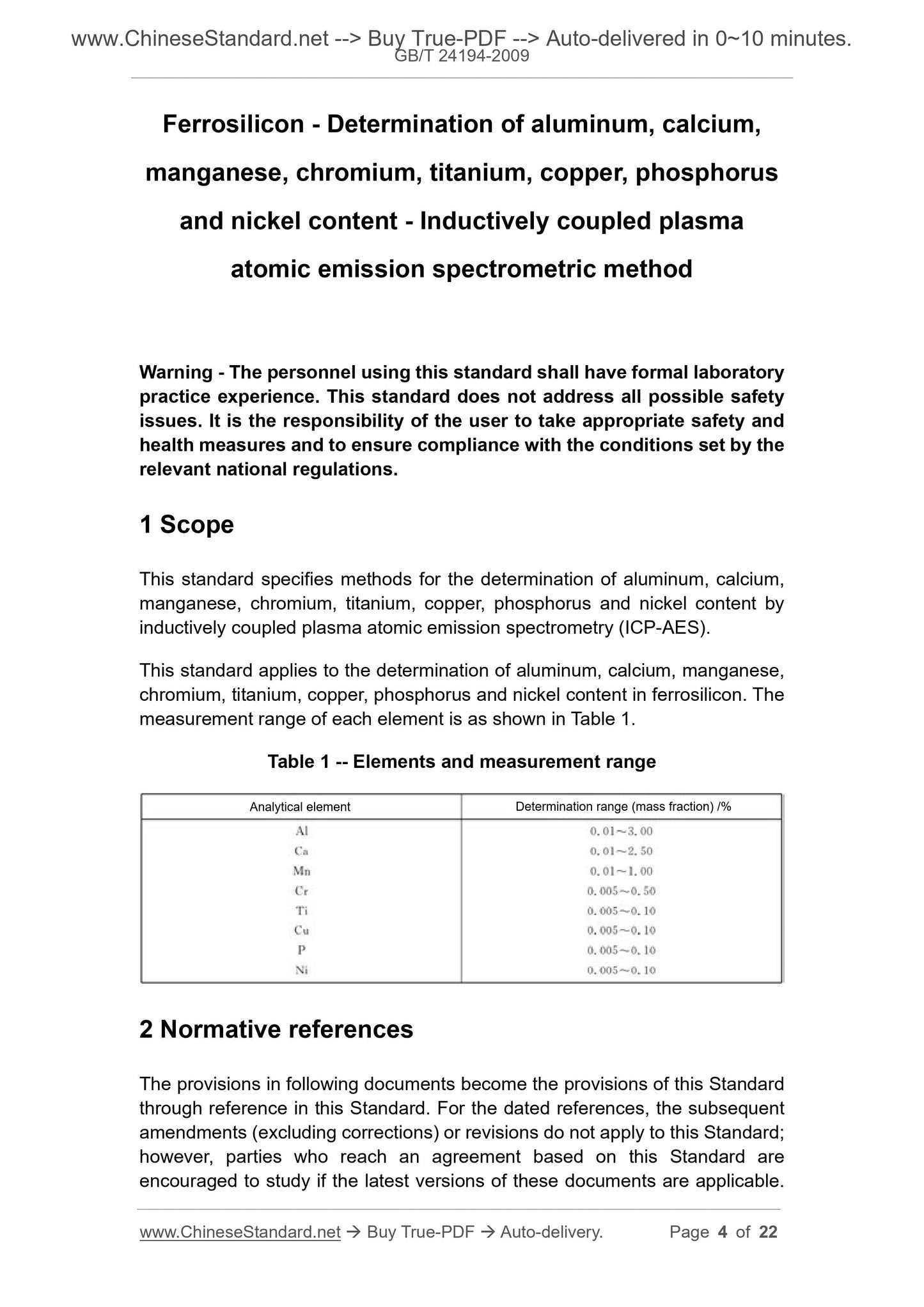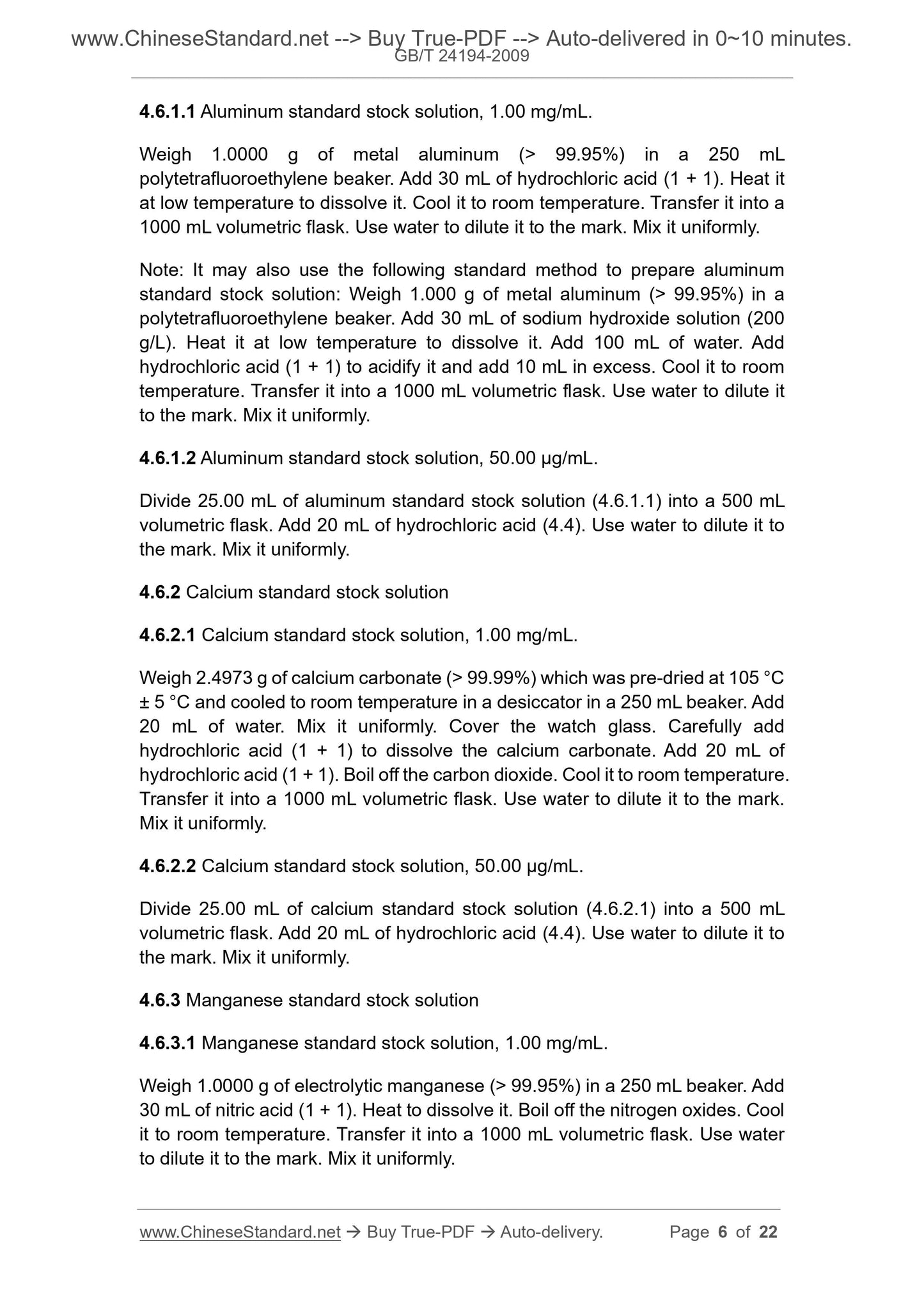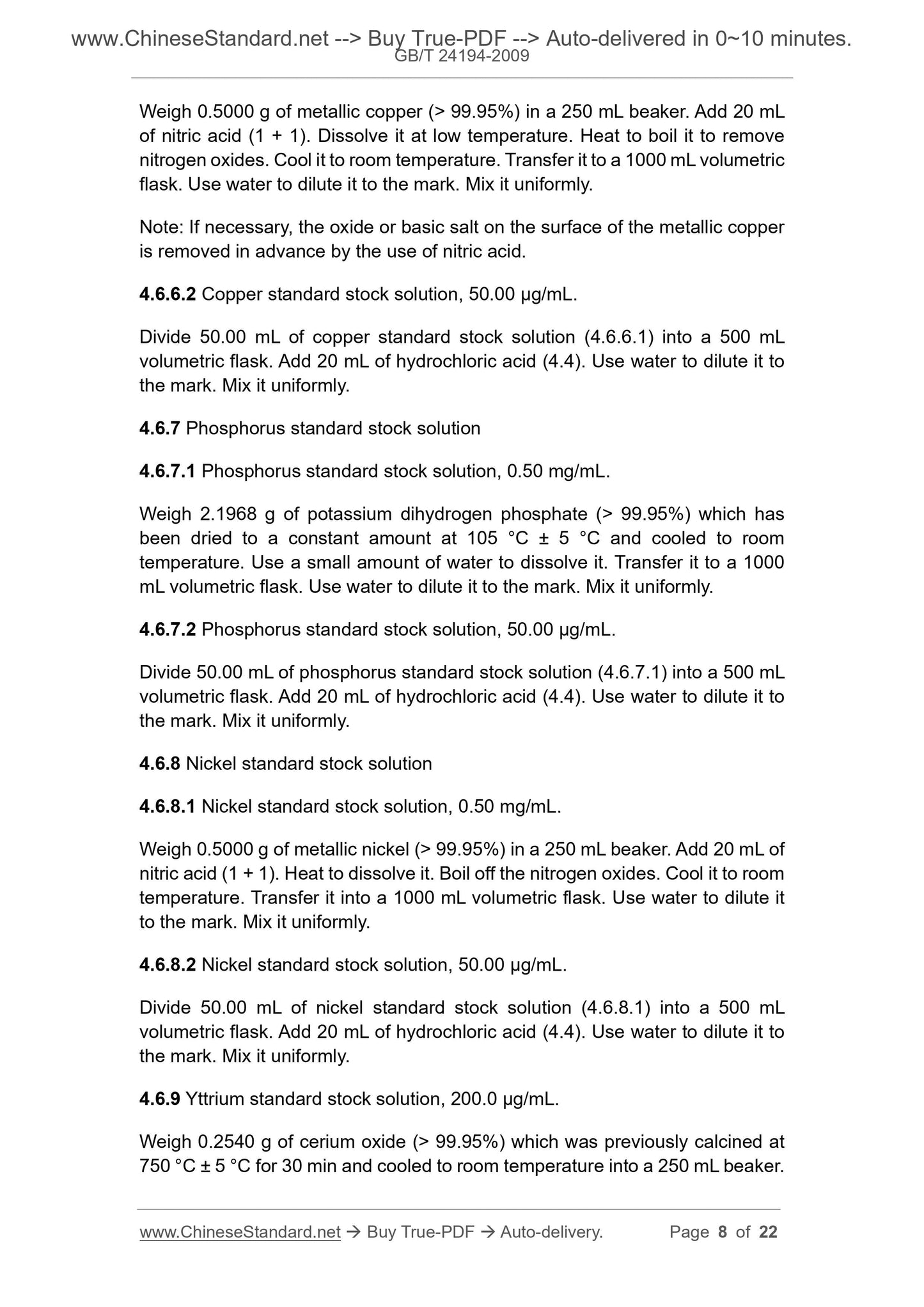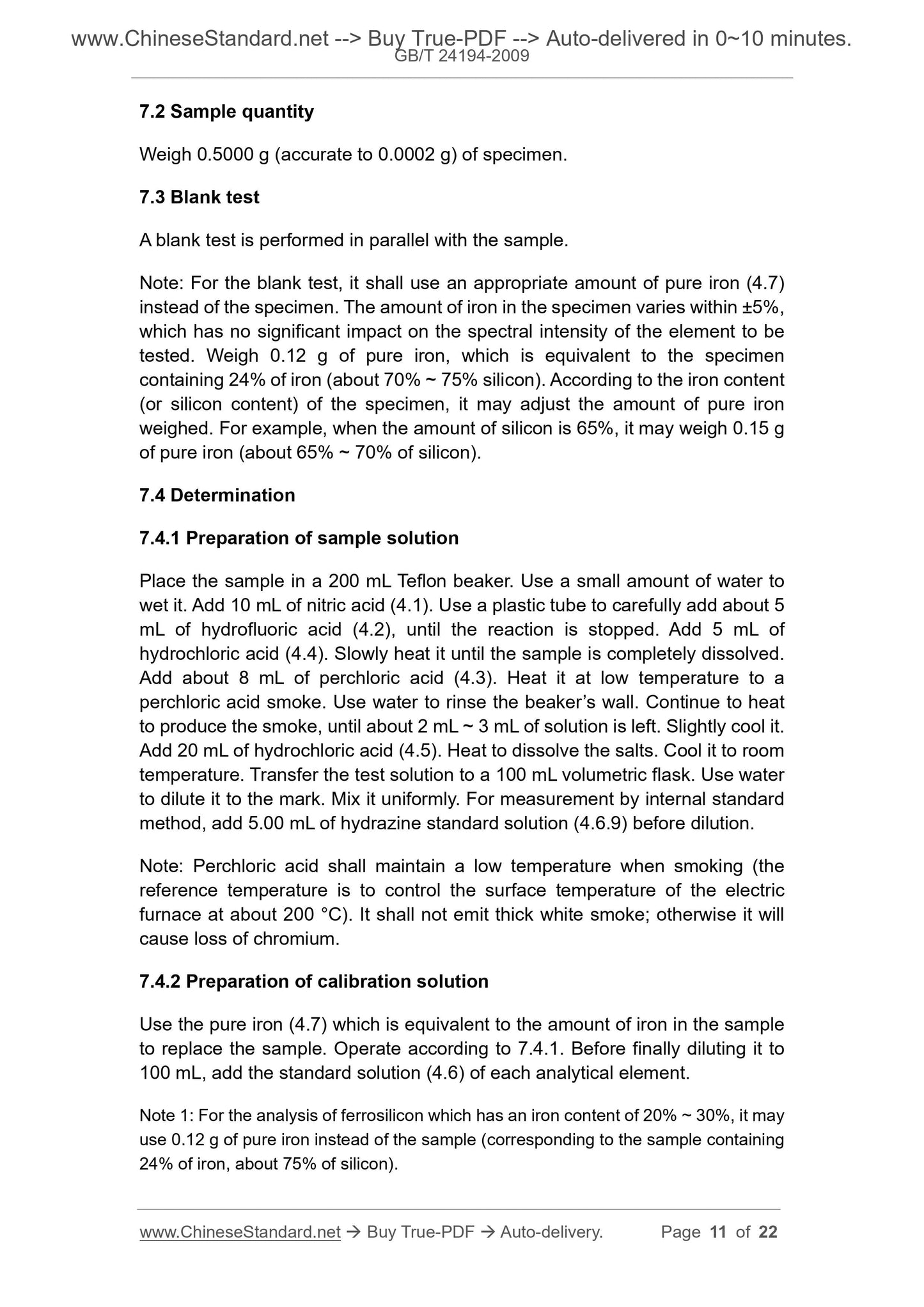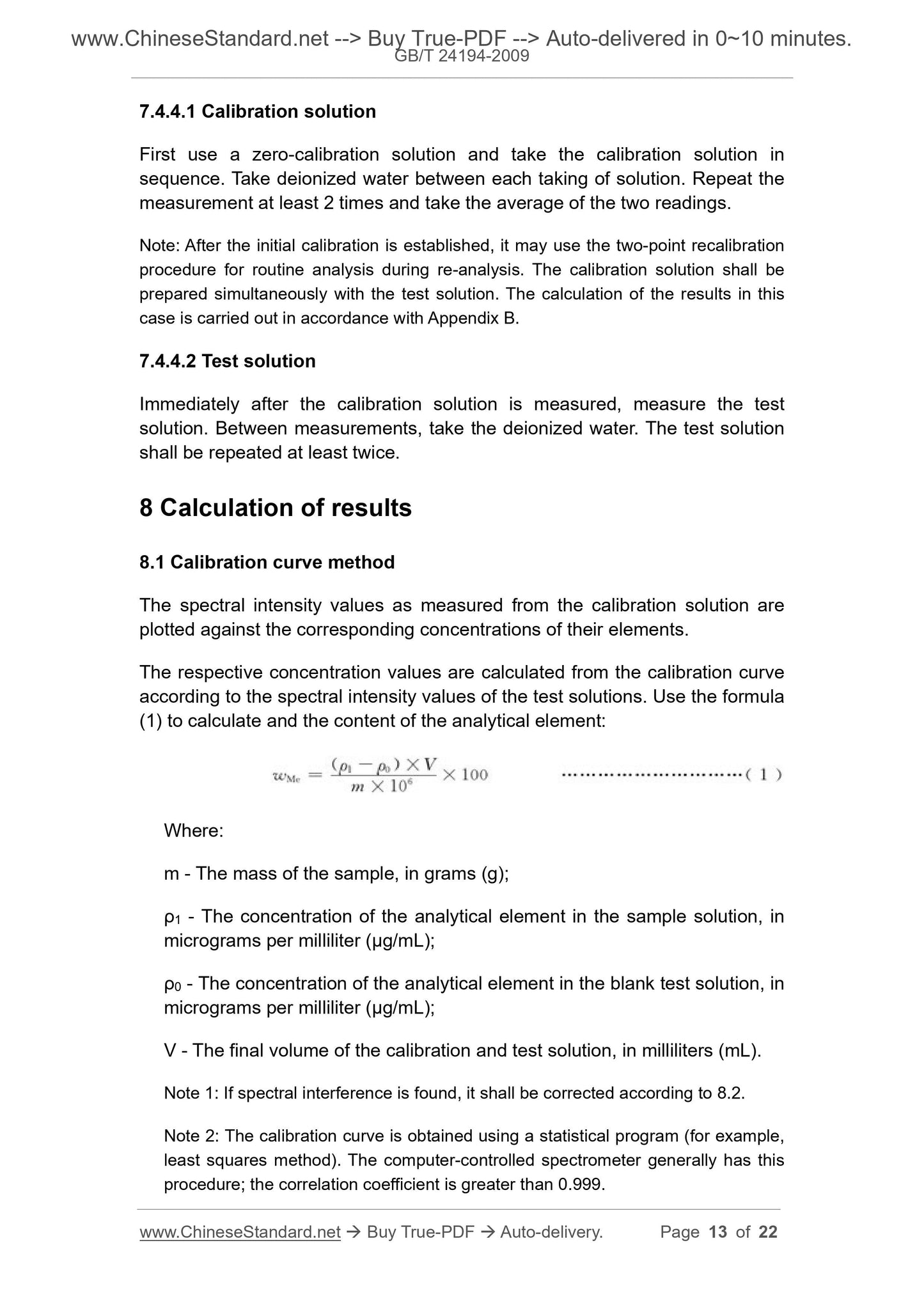1
/
of
7
www.ChineseStandard.us -- Field Test Asia Pte. Ltd.
GB/T 24194-2009 English PDF (GB/T24194-2009)
GB/T 24194-2009 English PDF (GB/T24194-2009)
Regular price
$150.00
Regular price
Sale price
$150.00
Unit price
/
per
Shipping calculated at checkout.
Couldn't load pickup availability
GB/T 24194-2009: Ferrosilicon - Determination of aluminum, calcium, manganese, chromium, titanium, copper, phosphorus and nickel content - Inductively coupled plasma atomic emission spectrometric method
Delivery: 9 seconds. Download (and Email) true-PDF + Invoice.Get Quotation: Click GB/T 24194-2009 (Self-service in 1-minute)
Newer / historical versions: GB/T 24194-2009
Preview True-PDF
Scope
This standard specifies methods for the determination of aluminum, calcium,manganese, chromium, titanium, copper, phosphorus and nickel content by
inductively coupled plasma atomic emission spectrometry (ICP-AES).
This standard applies to the determination of aluminum, calcium, manganese,
chromium, titanium, copper, phosphorus and nickel content in ferrosilicon. The
measurement range of each element is as shown in Table 1.
Table 1 -- Elements and measurement range
Basic Data
| Standard ID | GB/T 24194-2009 (GB/T24194-2009) |
| Description (Translated English) | Ferrosilicon - Determination of aluminum, calcium, manganese, chromium, titanium, copper, phosphorus and nickel content - Inductively coupled plasma atomic emission spectrometric method |
| Sector / Industry | National Standard (Recommended) |
| Classification of Chinese Standard | H11 |
| Classification of International Standard | 77.100 |
| Word Count Estimation | 14,130 |
| Date of Issue | 2009-07-08 |
| Date of Implementation | 2010-04-01 |
| Regulation (derived from) | National Standard Approval Announcement 2009 No.9 (Total No.149) |
| Issuing agency(ies) | General Administration of Quality Supervision, Inspection and Quarantine of the People's Republic of China, Standardization Administration of the People's Republic of China |
| Summary | This standard specifies the use of inductively coupled plasma atomic emission spectrometry (ICP-AES) determination of aluminum, methods and other elements phosphorus and nickel content, calcium, manganese, chromium, titanium, copper. This standard applies to ferrosilicon aluminum, determination of phosphorus and nickel content, calcium, manganese, chromium, titanium, copper. |
Share
